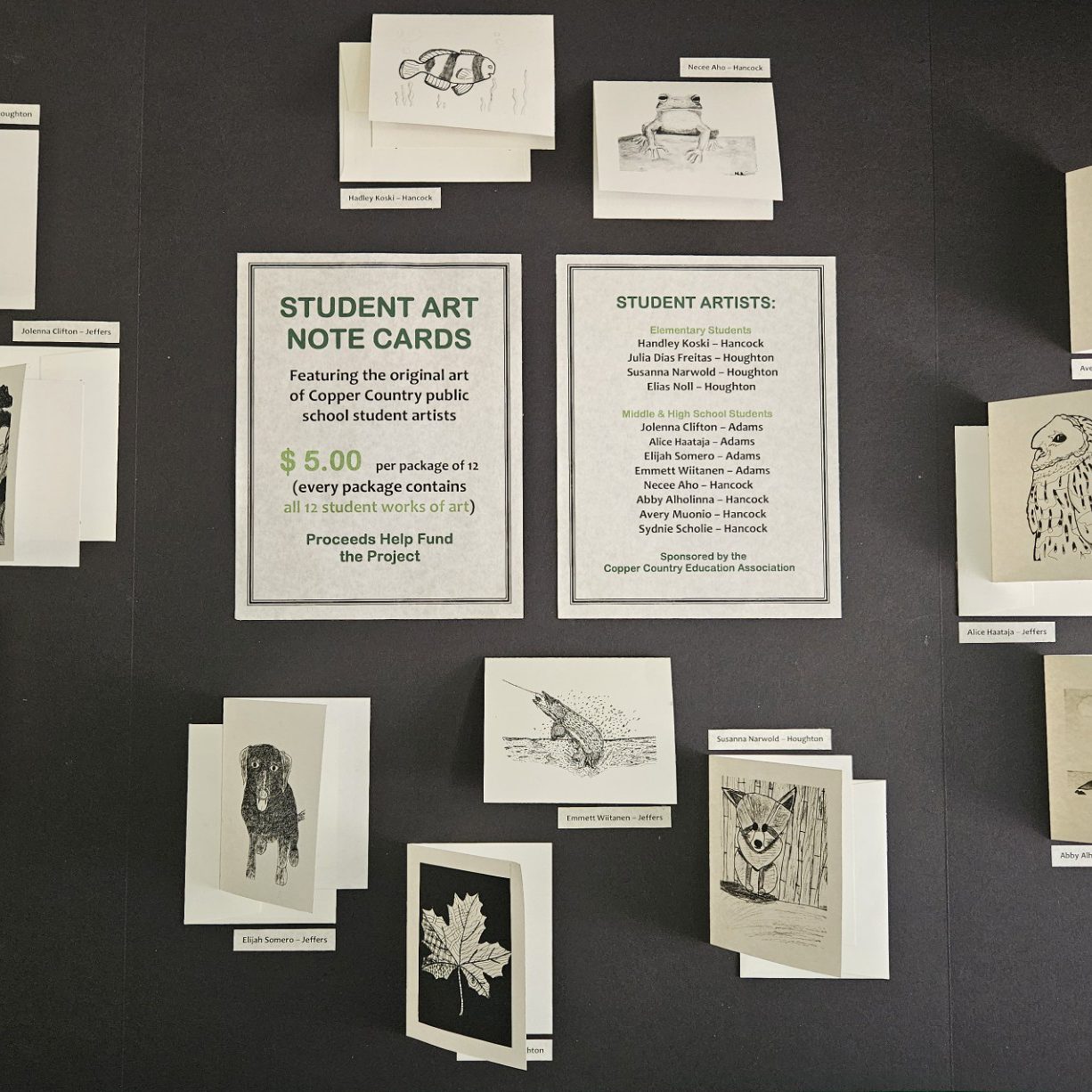Worried about students’ mental health, award-winning teacher takes action
By Brenda Ortega
MEA Voice Editor
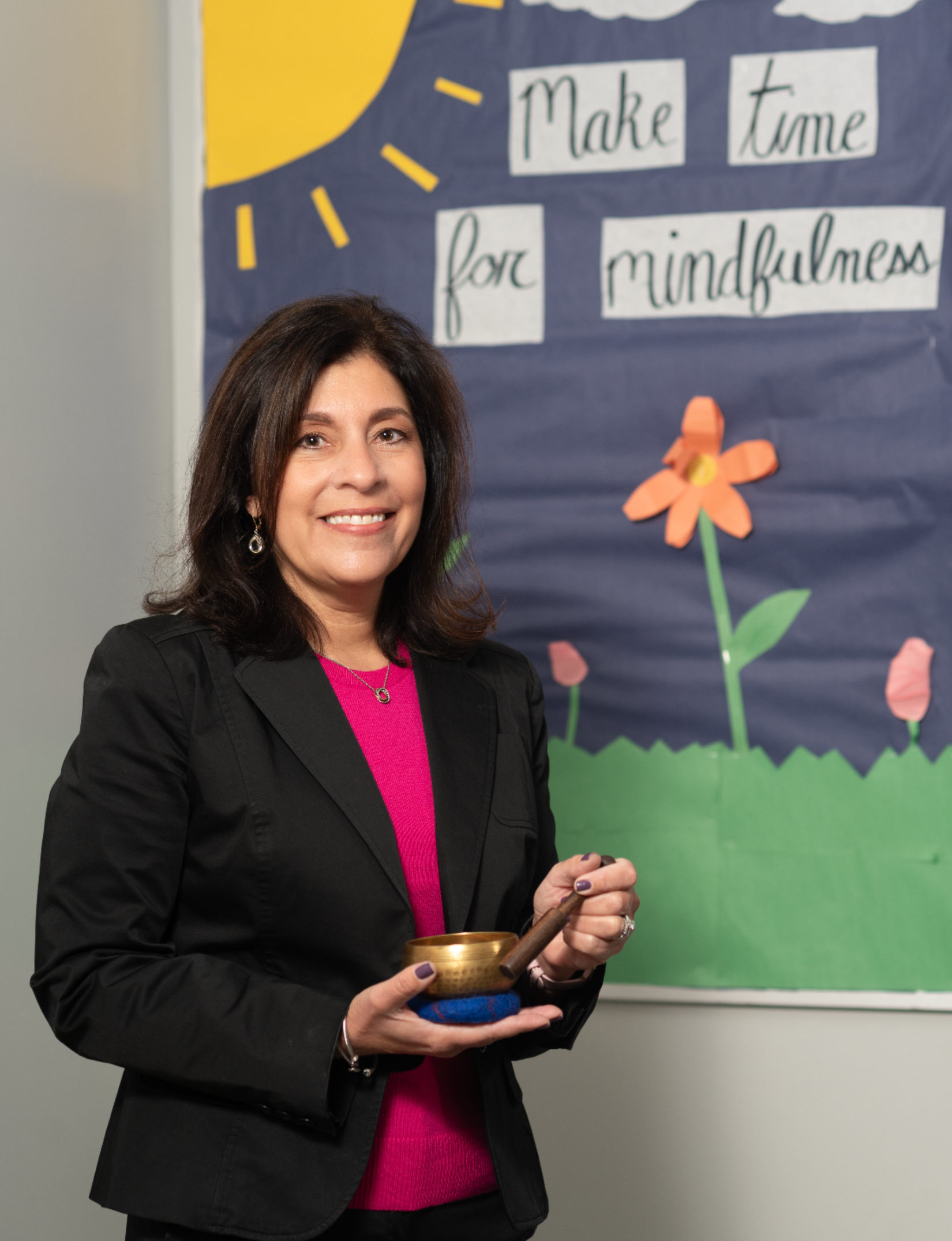
As a young person right out of college, MEA member Jennifer Sepetys had all she’d imagined for herself, living in Chicago with a friend and working successfully in advertising sales. But something was missing.
She decided to do volunteer work tutoring kids at Cabrini-Green, a public housing project in the city. The educators in her family – her mom and grandparents – had always pushed her to join the family profession, but being young and stubborn she’d gone her own way, Sepetys said.
“I did tutoring for a year and loved it. I realized I loved it more than my regular job, and that’s when I decided I wanted to go back to school to become a teacher.”
Now she tells that story to students in her Positive Psychology class at West Bloomfield High School as part of a unit that asks them to challenge their thinking on what makes people happy: Is it money and things or relationships and experiences?
“I didn’t understand some of these concepts until I was an adult, and I tell them that,” Sepetys said. “We look at the research and go through a lot of examples so it’s not just an adult saying ‘This is what you should think.’ It’s ‘Here are the studies and what do you think?’
“I’ll tell them, ‘I’m sharing this with you now so you can really think about it before you spend $300 on that new pair of Nikes or before you have to choose between buying that new purse and taking a trip to the UP with your friends.’”
The 20-week Positive Psychology class is a newer addition to elective offerings at WBHS which Sepetys built and launched in 2021 after the COVID-19 crisis brought student mental health struggles urgently to the fore.
Similar to a “happiness class” that became the most popular course ever taught at Yale University in 2018, Sepetys’ Positive Psychology class teaches students the behaviors and habits of body and mind that can positively affect physical and mental health.
She explains in class to students: “I’m going to give you some tools to help each other and to help yourself, but you are in charge of what you do with it. And if these things aren’t working for you—if you’re really struggling—please let me know; let someone know. Don’t keep it to yourself.”
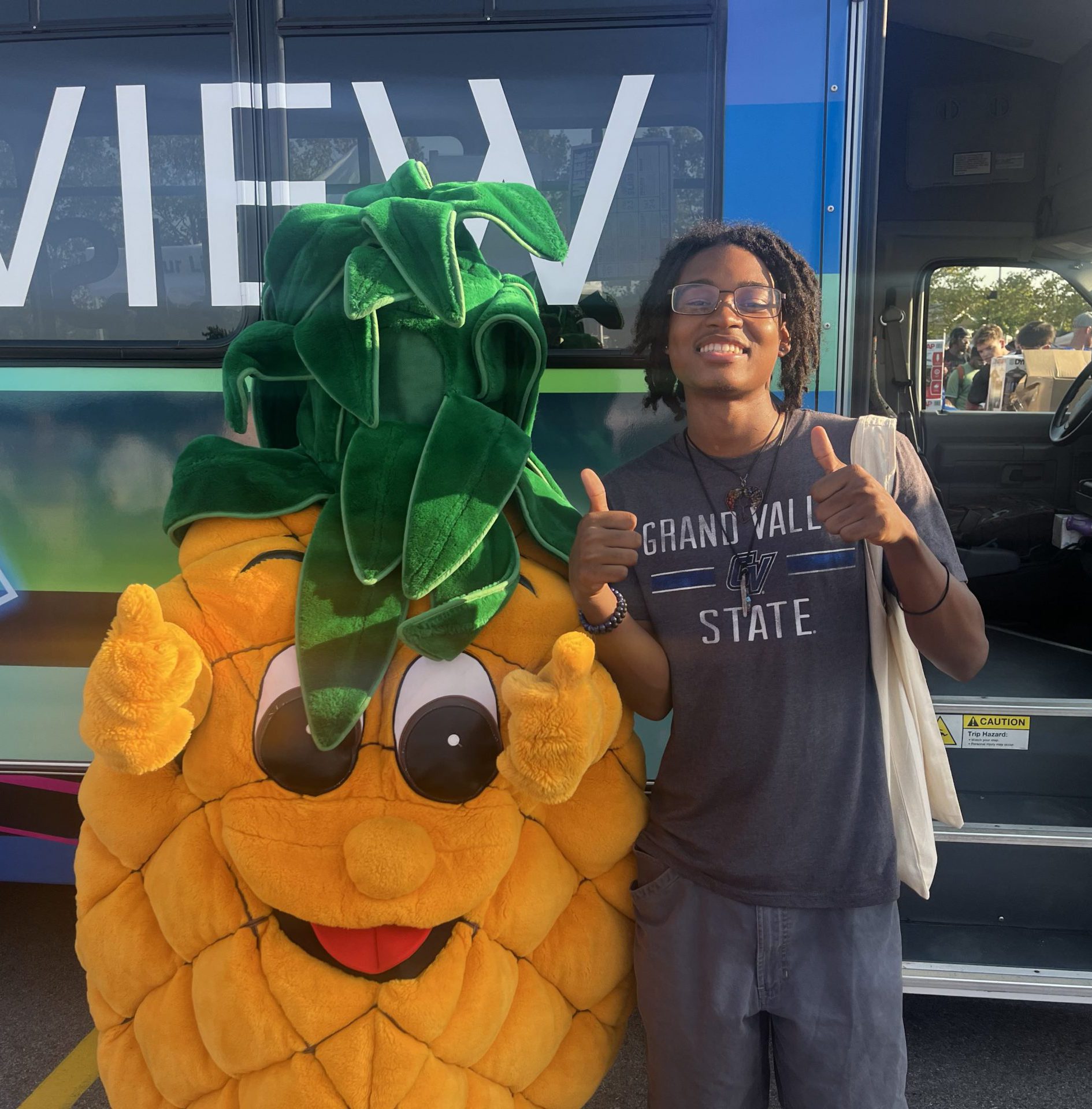
— Jacob Jackson
2024 WBHS graduate
WHY
An 18-year teacher and chair of the high school social studies department, Sepetys is best known for a difficult course she teaches in history of genocide—which she infuses with empathy for victims; hope for understanding and prevention; and respect for survivors who found a way to go on living.
In 2020 she saw first-hand the gravity of a growing youth mental health problem in the U.S. amid the global pandemic when educators and students had to shift quickly to teaching and learning in a virtual environment.
She used a Google form to communicate with students and check attendance while building rapport and engagement. There she gathered feedback on lessons and work-in-progress and checked on students’ emotional state with questions or a five-point wellness rating scale.
“I was surprised and kind of shocked by the responses I was getting and how many of them on the survey were giving themselves really low scores.”
Sepetys told students she would be checking back with anyone who marked a low rating, and she pledged to read everything students wrote in the check-ins. “I would reply back so they would know someone was listening,” she said.
Some conversations involved light-hearted joking or centered around a new puppy or favorite music. But in the one-on-one safe space she created, many students felt comfortable opening up to share their serious struggles, she said.
“I was reaching out to students and referring people to the counselor, and this became such a huge part of my teaching job beyond the curriculum. I realized it was something that was missing for kids, and they needed more than one person could do.”
Teenagers’ mental health issues had escalated to crisis levels before COVID-19 arrived on the scene, but the pandemic worsened the situation. Rates of youth suicide peaked in 2018 and again in 2021 with Black, Indigenous, and LGBTQ+ students at greatest risk.
In 2019, 37% of students overall experienced persistent feelings of sadness or hopelessness, and by 2021 that figure rose to 42%, according to data from the Centers for Disease Control and Prevention (CDC). The latest numbers show a slight decrease to 40% in 2023—still disturbingly high.
“It’s an ongoing issue,” Sepetys said.
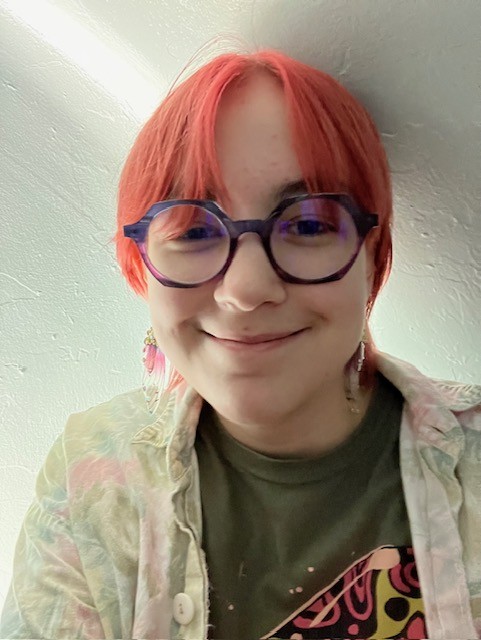
— Adeline Daag
WBHS sophomore
HOW
In the pandemic’s early days, grappling with how to address student needs in her classes, Sepetys decided to pursue advanced degrees at Oakland University. She has since completed an Educational Specialist (EdS) degree and is working on a doctorate (PhD) in Educational Leadership.
Her worries about students converged with the fact that her own two children were becoming independent, she said. She had the time to go back to school and wanted to focus deep learning on student mental health and how educators and schools could address it.
School counselors were swamped by demands of responding to students in crisis—unsurprising given Michigan’s second-worst-in-the-nation average of 671 students-per-counselor in 2020. That number improved to 598:1 by 2023, still far from the recommended level of 250 students-per-counselor.
In her early research, Sepetys looked into Expanded School Mental Health (ESMH), a framework that combines in-school professionals, such as social workers and psychologists, with external community partners to offer prevention, intervention, treatment and case management services for young people.
She found scattered school districts in the U.S. with established ESMH programs, but costs were high. Since then, many schools across Michigan have expanded rosters of mental health professionals using targeted federal and state funding delivered by President Joe Biden and Gov. Gretchen Whitmer.
“I wrote my first big paper on Expanded School Mental Health as a potential solution, and then realizing it’s expensive I thought, Well now what? What can I do as one person that can help students?”
Sepetys soon came across positive psychology—a field of study that took on new prominence a few years after she completed her undergraduate degree in psychology at University of Michigan in 1994.
She remembered having seen a newspaper article about the hugely popular course on happiness at Yale, which she went back and re-read, “and it just hit me,” Sepetys said.
In The New York Times article from 2018, “Yale’s Most Popular Class Ever: Happiness,” Dr. Laurie Santos said she created the course to address “the mental health crises we’re seeing at places like Yale.”
Santos said at the time, “Scientists didn’t realize this in the same way 10 years ago, that our intuitions about what will make us happy—like winning the lottery and getting a good grade—are totally wrong.”
Santos now offers the class online for free with self-paced versions for adults and teens at drlauriesantos.com. In addition, her website includes a Teacher Hub with a virtual community and free high school curriculum that can be adapted for a one-week unit or one-semester class.
In her continuing research, Sepetys also came across Martin Seligman, considered the father of positive psychology. After taking his free class on Coursera and being sold, Sepetys turned to getting a new elective added to the WBHS master schedule.
“I don’t want to see another student thinking about taking their own life because they didn’t know what they could do to understand and manage their sadness, or because they didn’t know how to ask for support or where to go for help.”
She gathered online resources from college instructors and professors—“anything I could get my hands on—and I created a course,” Sepetys said. “I had to present course information and student data before our curriculum council; they approved the course, and I’ve been teaching it now for a few years.”
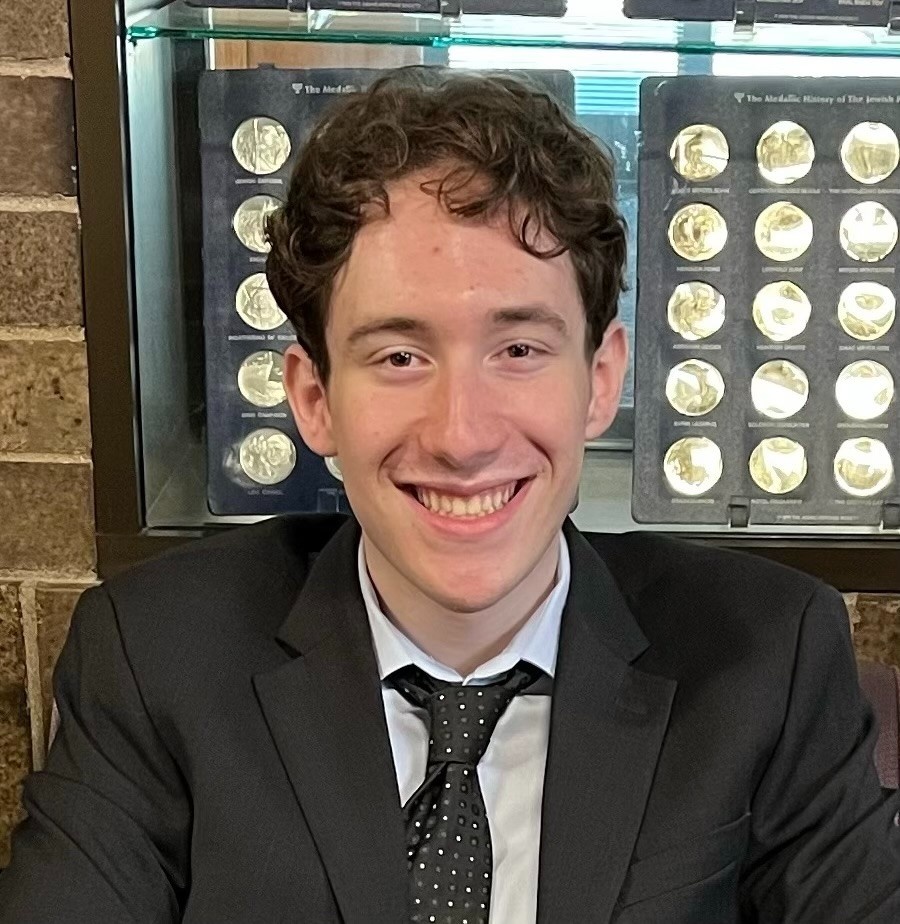
— Ryan Sparago
2023 WBHS graduate
WHAT
The class begins with a unit on stress and anxiety to help students identify personal triggers and recognize they’re not alone in facing tough issues. In the first week, after they write down stressors, Sepetys has them share some anonymously on a sticky note.
She mixes responses from different classes on sheets of butcher paper and hangs them in class for students to walk and peruse.
“That exercise is a powerful one, because they see that everybody has something going on and it’s best to be kind as they’re walking through the hallways not knowing what other people are dealing with,” Sepetys said.
She’s careful to let students know she is a mandatory reporter and to repeat more than once that if they share with her information about being harmed or harming themselves she is obligated to alert someone else to ensure they’re safe.
Sepetys forwards serious concerns to counselors every year, especially after the class completes the Iceberg Activity which asks students to identify parts of their selves which they present outwardly and other parts or problems they keep hidden.
She believes students write things down knowing they’ll be called in to the counselor as “kind of a way for them to call out for help when they don’t know how else to do it. They’ll write something really small in the bottom of their iceberg, because I let them know I read everything they write.
“I’m giving them a way to reach out early on—to know I’m listening and reading whatever thoughts they share.”
After the short opening unit, the class moves on to its purpose: “I say, ‘All right, we’re going to work on feeling better. Now that we all know we’re dealing with so much, let’s figure out what we need to do. How can we help ourselves and each other?’”
A unit on mindfulness and meditation gives students tools to be present in the moment through various breathing strategies, visualization, and writing in a gratitude journal, all of which is challenging at first but becomes easier as these practices continue throughout the semester.
Every class begins with quiet breathing and reflection, and three times a week students write down three to six things for which they’re grateful. Practicing gratitude through journaling helps individuals shift away from daily dwelling on negative emotions or experiences.
“We write some together at first, and we go through a lot of different examples, so students understand it can be something small—something as simple as ‘I can breathe,’ or ‘I woke up this morning.’”
The class studies PERMA, the acronym for building blocks of well-being identified by Seligman: Positive emotion, Engagement, Relationships, Meaning and Accomplishment. Other units look at things we think will make us happy but don’t, and how to set goals and implement strategies to achieve them.
As student awareness expands, one of the hardest issues to confront can be their use of cell phones and other unhealthy habits, Sepetys said. In class they look up data on their phones to know how many hours they’re spending on it, and the answer is often shocking and frightening, she added.
“For some it’s like 15 hours a day or more! I’m like, ‘When are you sleeping?’”
A grant helped Sepetys buy fidgets which she places at every table grouping, and students use those to practice interacting without a phone to fall back on when they’re uncomfortable. “They understand it’s an addiction, and they can see that when they’re struggling to not pick up the phone.”
Sepetys believes the class is making a difference based on feedback that includes final papers where students discuss learning and takeaways; student interviews she conducted for a qualitative analysis course; and anecdotal reports from class alumni who report they still are using what they learned.
“A lot of them say the mindfulness was a big one because of all the stuff going on in the world. Just to be able to close their eyes and experience quiet and stillness without falling asleep is a gift. That and knowing the importance of relationships is huge for them.”
WHO
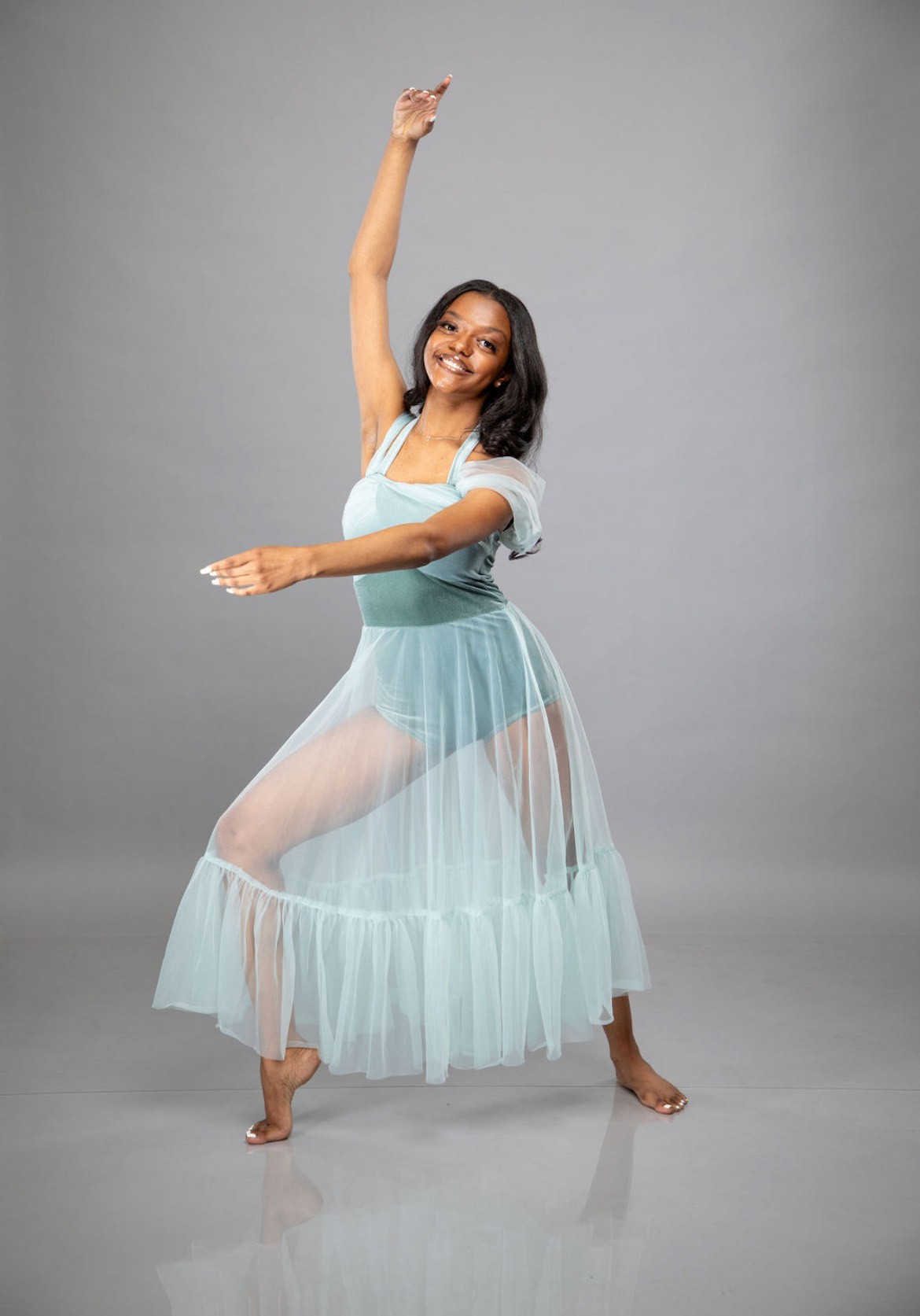
— Jordan Bailey
2024 WBHS graduate
Jordan Bailey is a former student from the class who agreed mindfulness has been her biggest takeaway now that she’s a freshman at Oakland University. Bailey graduated from WBHS after taking positive psychology as a senior, and she said mindful practices help her alleviate anxiety.
“I’m sort of a quiet person, and now that I’m in college it’s helped me feel more comfortable being social or talking with someone I don’t know,” she said.
A dance major who dreams of a career as a dancer, choreographer and creative director, Bailey said she regularly practices mindfulness and breathing strategies she learned—the triangle, star and square methods—to help her focus on what she’s doing, whether it’s walking to class or dancing.
The breathing strategies also worked as an intervention when she experienced an anxiety attack from being overly self-critical in a ballet class where she fell into comparing herself to others.
“I noticed myself not breathing, and I noticed myself having an anxiety attack, and then I remembered to breathe properly and bring my mind back to my breathing, and it really helped me calm down my body,” Bailey said.
Current WBHS sophomore Adeline Daag took the class last year as a freshman. Daag said in an interview she misses having positive psychology to start the school day, but she still uses the gratitude journal and mindfulness practices she learned.
“Keeping a gratitude journal helps remind you there’s a little bit of good in every day even if it’s a hard one,” she said. “It’s a very helpful coping mechanism that teaches you not to narrow in on something small and negative that happened to you.”
Daag described mindfulness as “being completely present in the moment” by giving attention to physical senses—“letting yourself be absorbed by the nuances in music you’re hearing or focusing on the textures and flavors of what you’re eating, even if it’s something you don’t like.
“Once you learn how easy it is to do, you can do it anytime and anywhere—and that’s a good takeaway that a lot of students will have with them for life.”
It’s been a couple years since Ryan Sparago took the class just before he graduated in 2023. Now a sophomore business student at Bowling Green State University, Sparago said he believes the mental health crisis is so urgent that the class should be required in high school.
The takeaways he carried into college are the importance of being kind to others and grateful for small things in life. “In my opinion, social media has become one of our biggest problems in terms of the toxicity and anger and bitterness that we see everywhere,” Sparago said.
“We have to do and be better. For that reason I try to be grateful for what I have and just keep being nice to people.”
Another student who’s now a freshman in college, Jacob Jackson, said what he learned in Sepetys’ class helped him adjust in his first year at Grand Valley State University.
The class helped him learn to talk to others without hiding behind a phone if a moment got awkward. “The way we were all kind of nice to each other in that class made it feel like a community,” he said.
A psychology major who aspires to be a child therapist, Jackson also actively incorporates into his life the idea that money and things don’t make people happy as he once believed.
“I remind myself some random thing I’m about to buy in Target won’t satisfy me, so I try to focus on experiences I want to have. I’ve been going to concerts more, trying new things, and that helps a lot.”
Perhaps the most important lesson from Sepetys that he’s applied at college was to reach out for help when he found himself struggling at first. Now he’s made friends, joined clubs, and found his place.
“In class we had discussions about how sometimes men find it hard to speak up about this stuff, but she made it a safe space for everyone to talk about problems and what can help. I think it did open up a comfort level to be able to say what’s really going on.”
WHEN
There is no time to lose in addressing teen well-being, Sepetys said: “I just hope that mental health services continue to be funded in our schools, because it’s incredibly important and it affects everything.”
Named a Region 9 Teacher of the Year by the Michigan Department of Education in 2022, Sepetys presented her findings on student mental health and the positive psychology class to the State Board of Education that year.
What makes her happy is hearing students say the class helped. “I want them to walk out with at least one strategy they can use to help them make a decision or feel better about themselves and what they can do in the world.
“The students know I’m right there with them, facing challenges like we all do and trying to learn—What can I do when I feel sad, and how can I make others feel better? I love what I’m doing, and I love learning, and I hope they’ll find something that they love too.”


